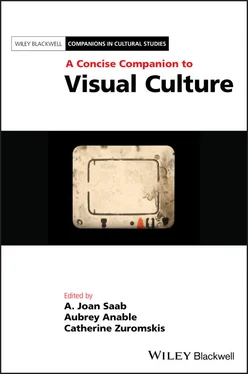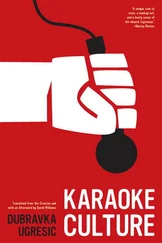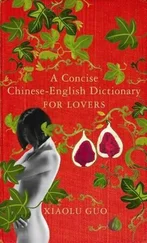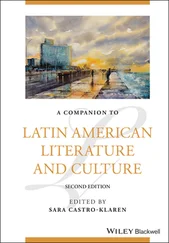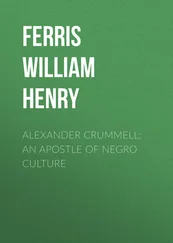RICHARDI really agree with that. Douglas was able to juxtapose subjects and objects that you wouldn’t expect to encounter side by side. In this case, the force of the unconscious, as evidenced in the physical manifestations of Douglas’s inability to grieve his father, is juxtaposed with the problem of mourning in the context of the AIDS epidemic. Douglas generated enormous power through such juxtapositions. He was able to do so, I think, because he was so attentive to ambivalence and contradiction. It was one of the things that made him a great critic.
JONThis might be straying too far, but I wonder whether an experience of queerness as a tricky or complicating relationship with one’s family is in some way a primary critical “scene” that shapes one’s worldview. I mean that this experience of the family as the first place where you recognize difference or outsiderness could feed into your critical eye.
RICHARDMaybe for some people, but I’ve met a lot of queers who aren’t very critical at all [laughter]. I don’t even know whether this would apply now to this generation, but in my generation everyone I knew who was a homosexual—gay or lesbian—felt that they had had to suppress that or keep it secret. In writing Outlaw Representation : Censorship and Homosexuality in Twentieth‐Century American Art (Meyer 2002), I realized that the suppression of homoerotic art reinforced the prior prohibition of homosexuality to which individuals are subjected at both the psychic and the social levels.
*
RICHARDIn Douglas’s “Getting the Warhol We Deserve,” part of what he is arguing is that we have to try to be as complicated as the artists we study. So it doesn’t make sense to just take these silkscreen paintings that Warhol made from 1962 to 1966 and separate them from his films, from the magazine, from Andy Warhol Enterprises , from the portraiture, the photography… But that’s what art history does— it takes the Art with a capital A. And I don’t quite agree with the proposition of this reader that visual culture studies has moved from the margins and has become an established field nationally and internationally, continuing to grow. I guess I would ask you about that—you, as someone from a younger generation and working on your PhD now. I, as someone who got his PhD in 1996 at the height of visual culture’s visibility, don’t see lots of departments, lots of jobs in the field now. My students—who often work on queer materials—are working on a range of elite culture and sexual and other subcultures, and I don’t find them using the term “visual culture” very much. I guess I want to slightly disagree with “all is well with visual culture studies.”
JONI guess that, because I was out of academia [between 2004 and 2016], it felt like the lessons that visual culture had to teach had become part of the broader cultural ether; and I assumed that art history had been transformed by this more expansive way of seeing cultural production. Now that I’m in an art history PhD program, I see how there are departments—though I think Stanford’s is very much an exception—where the practices and the ethos of visual culture haven’t penetrated as much, where those full‐throated critiques of visual culture are still holding sway. I also feel like museums are really going through a transformation right now whereby they have to think of themselves as democratic instead of elite institutions; but so much of art museum culture is object‐based and doesn’t know how to handle more ephemeral or everyday practices other than by putting traces of them into a vitrine. So I feel like a lot of the work of making sense of visual culture has fallen outside the capital‐A Art world. Perhaps we can connect this to the idea that “queer” is really up for re‐examination, and what it could mean now and in the future. I think of scholars like Kadji Amin (2017), who is writing about Jean Genet and saying that, rather than looking for “the Genet we want,” we could say, you have to look also at the “Genet we don’t want,” foregrounding his racial fetishism, his pederasty. He suggests that all the “bad objects” is where “queer” should look now.
RICHARDRather than being self‐affirming?
JONYes, rather than queer always being on the side of the politically progressive and liberatory. And I think there’s a sense in which, when queer studies is a really strong part of your formation as a scholar, when it’s so much a part of you, you maybe don’t think about it as a phenomenon that needs to be defended. We’ve created a bubble for ourselves, and it’s only when you are in a different context that you realize this might not be a shared affiliation but something more contested.
RICHARDWhen I started doing the kind of work I’m doing now, there was no queer studies, there was just gay and lesbian studies. So Douglas says this thing that I think is really important. In terms of the shift from art history to visual culture, he writes,
The subject of the discourse, like its object, cannot be exempt from the questions of historicity and relationality (of self and other) that are raised by the theory of subjectivity itself. This does not—in fact cannot—entail assuming a coherent subject position in advance. Rather it means recognizing the continency, the instability of one’s own position, the necessarily situated place from which one speaks, the fragmentation and partiality of one’s vision. And more, it means recognizing how one’s position is constituted, through what exclusions it is secured. (Crimp 1999, 58)
I think it’s really important that there was this shift from this idea that, as art historians, we are somehow going to get at the truth of the object, or that the historical context is going to be reconstructed as fully as possible without our actually thinking—not only about our subject position autobiographically, but about the one we inhabit because of our historical moment and identities. That you should be thoughtful about how you are constructing a past for the uses of the present. And that it’s not just about an archaeology that reveals or digs into the past until it finds the object; in a certain sense, it is also digging into the subject.
The queer studies that I’ve always been most interested in is the kind that looks at reception as much as it looks at production, at the ways in which we queer something often by how we read it and not because of how it was intended. Queerness can be about misbehaving as a viewer or as a reader. When I was in my twenties, I was an intern at the Metropolitan Museum of Art and we had to do a “masterpieces tour”; and there was this one portrait of a soldier by a baroque artist, Antonio del Pollaiuolo. I thought it was really beautiful and I deemed it a “masterpiece” for the purposes of my tour. The guy I was dating at the time said he wanted to hear me give the tour, a proposal to which I reluctantly agreed. After it was over and the small audience had dispersed, the first thing he said to me was: “The basket on that soldier is amazing! You should talk about that.” It had never occurred to me that you could check out paintings the way you might check out men, or at least that you could say it out loud. It was a very explicitly sexual way of reading against the grain. Douglas’s work does not instruct us to look at soldiers’ crotches in paintings, but rather to acknowledge our desiring positions as spectators, especially when those desires do not align with the normative expectations of the museum.
In the introduction to On the Museum’s Ruins , Douglas mentions that he was, at that moment, turning from poststructuralism and institutional critique to activism around the AIDS crisis, moving from the object—critiquing how the museum works, or how modernism flattens art history—to the (queer) subject (Crimp 1993). I came to awareness about art history when poststructuralism was extremely prominent through October , and psychoanalysis to a certain degree; and then there was feminism, which I was very drawn to, and the beginnings of sexuality studies. Although I couldn’t have understood it at the time, what I was looking for was a way to put the subject and the object in conversation.
Читать дальше
